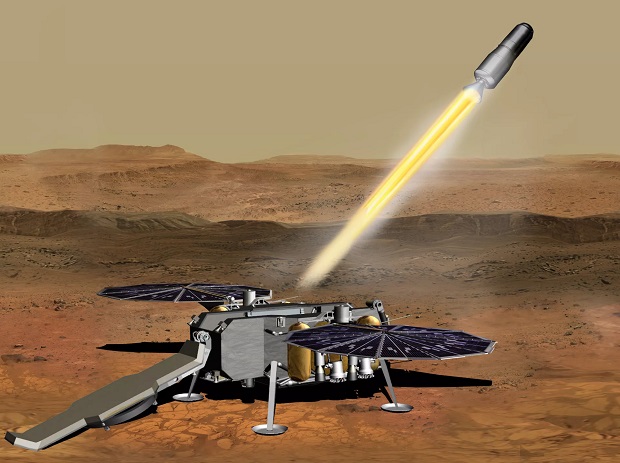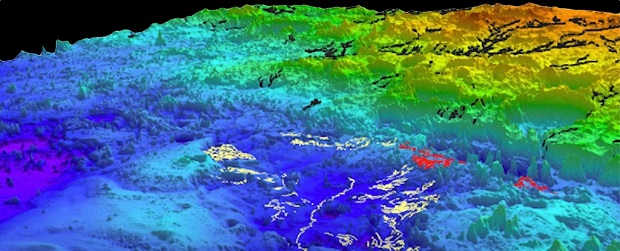
Search for life on Mars: Could Red Planet show future of Earth? Interview with NASA Armenian engineer
A cold desert planet with dusty, dry landscapes – this is how Mars appears in all the images taken by NASA's Curiosity rover. However, it is possible that the planet was not always like this. Scientists believe that the Red Planet once had water – even whole oceans. Perhaps there was life, too – at least in the form of simple bacteria.
To find out if this is true, NASA scientists are planning a mission called Mars Sample Return, the launch of which is scheduled for 2028. By 2033, several dozen Mars soil samples collected by the Perseverance rover are scheduled to be delivered to Earth.
Mission on the horizon: Bringing Martian soil samples to Earth
Arbi Karapetian, head of NASA's Flight Electronics Division at NASA's Jet Propulsion Laboratory, told NEWS.am Tech that when Martian soil samples are delivered to Earth, scientists will have to carefully examine them. However, it is difficult to say whether they will find anything interesting in them, including any signs of life on Mars. But even if they don't find any, it won't mean that there was no life on Mars.
"If we go to a desert and take a sample of sand, and there are no plants in that sample, can we claim that nothing grows in that desert at all? After all, in fact, it won't be like that," said the expert.
According to him, if signs of life are found in the samples brought to Earth, it will be a huge discovery for mankind. But even if nothing is found in them, it will just be necessary to continue the search.

The Perseverance rover collects soil samples at the bottom of the 45-kilometer-wide Jezero Crater. According to NASA officials, this is a great place for such work, as billions of years ago there was likely a large lake and river delta, so it was a potentially attractive habitat for life.
Deserted Mars: Is such a future awaiting Earth?
In recent years, several studies have shown that Mars likely did have water in the distant past.
Thus, scientists from the University of Pennsylvania have found evidence that about 3.5 billion years ago, the surface of Mars may have been a vast ocean covering hundreds of thousands of square kilometers.
Scientists led by specialists from Cambridge University, in turn, have found evidence for the possible existence of liquid water under the southern polar ice cap of Mars.
If the planet had water, with a fairly high probability life could have existed on it. A recent climate modeling study confirmed this: about 3.7 billion years ago, simple bacteria that fed on hydrogen and emitted methane could have lived on Mars. These bacteria may still be there today, but they are deep in the planet's crust. Or perhaps the methane released as a result of their life activity was one of the main reasons for the cooling of the planet (now it is minus 60 degrees Celsius or lower, but in the past, the planet was much warmer), which eventually led to the extinction of the bacteria.

According to another hypothesis, there was seismic and volcanic activity on Mars in the past, which kept the planet at a higher temperature. But about a billion years ago it went out, and the planet began to cool and its atmosphere – once quite dense, with lots of carbon dioxide – became more rarefied. All this must also have worsened conditions for bacterial life on the planet.
According to Arbi Karapetian, the study of Mars can help us learn more about Earth – about our planet's past and future.
"It will help us better understand ourselves – where did we come from? How did it come to be that life arose on Earth?"
But can Mars show us the future of Earth? Could Earth become a cold desert like Mars?
According to Karapetian, although the Earth and Mars are quite close to each other by cosmic standards, still we should not forget that they are different planets, and therefore it is possible that their "lives" will also proceed differently.
- Related News
- NASA shows all of Ingenuity's flight trajectories in one video
- Could life exist on Saturn's moon Enceladus?
- Why is it so difficult to send people to the Moon today?
- Once in a lifetime phenomenon: This year we will observe a star explosion that occurred 3,000 years ago
- "AMADEE-24" Mars Analog Research Mission in Armash came to an end
- NASA creates new generation solar sail: What is it for?
- Most read
month
week
day
- iPhone users are advised to disable iMessage: What risks are hidden in it? 1637
- Pavel Durov gives interview to Tucker Carlson: From 3-hour interview, less than hour appears in final version 1376
- Meta unveils Llama 3 and claims it's the "most powerful" open source language model 820
- Once in a lifetime phenomenon: This year we will observe a star explosion that occurred 3,000 years ago 798
- WhatsApp to integrate AI function: What will it do? 763
- Google fires 28 employees who protested against company's cooperation with Israel 762
- Nokia and Heineken introduce Boring Phone: It does not have social networks and a browser, but it is designed for people over 21 (photo) 746
- Boston Dynamics introduces new version of Atlas robot that is completely electric։ Where will it be applied? 723
- iPhone 17 Plus will have smaller screen 690
- 5 best smartphones with IPS screens 672
- Archive
